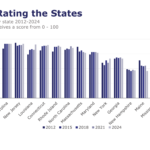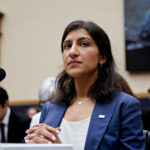Peter Hancock may have met his hardest challenge yet.
Since Hancock took over as chief executive officer of American International Group Inc. last year, Warren Buffett’s Berkshire Hathaway Inc.’s new commercial insurer raided AIG for talent. The integration of two AIG Japan units stalled. And Hancock coped with what he saw as an inadequate focus on technology and data, recruiting new staff.
Still, Hancock exited a stake in an aircraft-leasing business and increased share buybacks, helping AIG’s stock beat the Standard & Poor’s 500 Index this year. That wasn’t enough for Carl Icahn, who disclosed a stake Wednesday in AIG and demanded the firm split into three public companies. The billionaire even mocked the former banker for failing to deliver a 10 percent return on equity, a quest since Hancock ran one of AIG’s largest units.
“You have shown no sign of urgency and have chosen a ‘wait and see for years’ strategy, void of decisive leadership,” Icahn wrote in a letter published on his website. “Amazingly, you have turned the quest for a 10 percent ROE into a half-decade journey.”
‘Significant Steps’
AIG’s response was more subdued. Hancock said in a statement that he welcomes feedback from shareholders and has taken “significant steps” to simplify the company. Hancock recently announced a deal to scale back in Taiwan and an agreement to sell operations in Panama, El Salvador and Guatemala. That falls well short of what Icahn wants.
The billionaire urged AIG to split into one company offering property-casualty coverage, another selling life insurance and a third backing mortgages. His letter sent AIG shares up 4.9 percent to $63.89 at 4:03 p.m. in New York trading, the biggest one-day gain since 2013.
Hancock is “going to have to take a lot of orders and possibly get someone on the board to dictate how the spinoff plays out,” Jonathan Morgan, a deals analyst at The Edge, a research firm, said by phone. “He’s in for a bit of a wild ride.”
AIG intends to remain a combined firm, according to a person familiar with the company’s thinking. Intra-company guaranties would make it hard to split the businesses, and AIG would lose the advantage of cross-selling some products to corporate clients, especially outside the U.S., said the person, who asked not to be identified discussing internal deliberations.
‘Very Interested’
Icahn said that dividing the company could free up AIG from the regulatory oversight faced by the largest non-bank financial firms. While Icahn sees AIG’s designation as a systemically important financial institution as a drag on returns, Hancock has expressed doubts about the benefits of avoiding the risk tag and Federal Reserve oversight.
“There’s 200 other regulators that are also very interested in how we run the company,” Hancock said in May. “So it’s not clear to me that getting off that off-ramp changes management’s flexibility in any material way.”
ROE Goal
AIG believes that the need for holding capital is driven by ratings firms, not just government watchdogs, and would still be substantial if the company were split, according to the person familiar with the company’s deliberations. The company will address analysts in a conference call on Nov. 3, the day after it reports third-quarter earnings.
“Peter will have to articulate clearly for the markets and to the public why he thinks the shareholder would be better off maintaining the company in its current form rather than dividing it into two, or perhaps as Carl says, three,” former AIG Chairman Harvey Golub said in a Bloomberg Television interview.
Hancock, a former J.P. Morgan & Co. executive who played a key role in the development of credit derivatives, joined AIG in 2010 and became head of the property-casualty operation in 2011. That year he highlighted a plan to lift the ROE “north of 10 percent by 2015” from about 6 percent in 2010. The operating ROE was 8.8 percent in the six months ended June 30.
‘Properly Rewarded’
He was credited for improving underwriting discipline, focusing on profit margins rather than the volume of insurance sold. And the insurer exited a U.S. bailout in 2012 under then- CEO Robert Benmosche, who sold assets to help repay the rescue. When Hancock was appointed last year to the top post, he said one of the lessons of AIG’s near-failure in the financial crisis was that the insurer needs to focus on insurance where it is “properly rewarded” for taking on risk.
Icahn, 79, re-branded as an activist investor and outspoken shareholder advocate after gaining fame as a corporate raider in the 1980s. He is worth more than $20 billion, according to the Bloomberg Billionaires Index.
Icahn has racked up some quick settlements with targeted companies this year. It took just weeks to get directorships for his allies at natural gas exporter Cheniere Energy Inc., and copper producer Freeport-McMoRan Inc. He’s also waged campaigns at Manitowoc Co., Hertz Global Holdings Inc., Gannett Co., Family Dollar Stores Inc. and EBay Inc., most resulting in board seats and transactions like splitting businesses or outright sales.
Apple, Hartford
A company’s size is not a deterrent to Icahn. He famously invested in Apple Inc., and pressured the world’s biggest publicly traded company to boost buybacks and dividends.
Hartford Financial Services Group Inc., a rival insurer, faced calls in 2012 to split from billionaire John Paulson, who is allied with Icahn in pushing for an AIG breakup. While Hartford’s then-CEO Liam McGee didn’t go as far as Paulson initially demanded, he did sell major units and eventually won praise from the hedge-fund manager.
Hancock may actually embrace some of Icahn’s push to further simplify AIG, said Meyer Shields, an analyst at Keefe Bruyette & Woods.
“One thing that struck me is AIG’s response had no defense of keeping the companies together, so they may be open to it.,” Shields said of Icahn’s plan. “It doesn’t mean it’s not a lot of work, but I wouldn’t necessarily assume they’re going to fight it.”
–With assistance from Katherine Chiglinsky in New York.





















 IBHS: Virginia Edges Florida Out of First Place in Building Code Adoption
IBHS: Virginia Edges Florida Out of First Place in Building Code Adoption  Fitch: U.S. Cyber Insurers Saw Strong Profits, Slowdown in Premium Growth in 2023
Fitch: U.S. Cyber Insurers Saw Strong Profits, Slowdown in Premium Growth in 2023  FTC Issues Worker Non-Compete Ban as Chamber Lawsuit Looms
FTC Issues Worker Non-Compete Ban as Chamber Lawsuit Looms  Time-Tested Loss Reserving Methods Challenged: AM Best
Time-Tested Loss Reserving Methods Challenged: AM Best 








